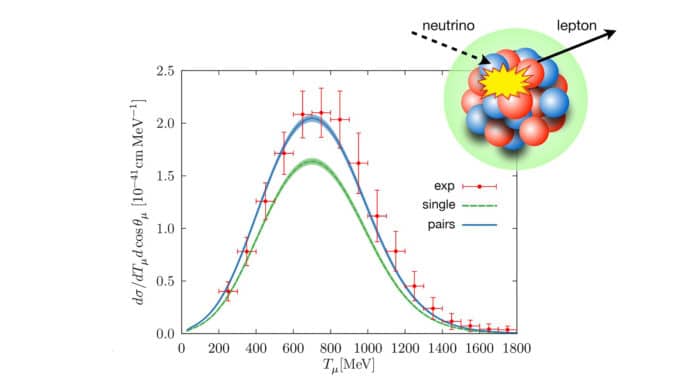Nutrino is often considered as the ghost particle. Countless neutrinos came into existence fractions of a second after the Big Bang.
Neutrinos are created all the time: in the nuclear hearts of stars, particle accelerators, and atomic reactors on Earth, during the explosive collapse of supernovas and when radioactive elements decay.
Despite their ubiquity, neutrinos largely remain a mystery to physicists because the particles are so tough to catch.
Alessandro Lovato is a member of a research team from four national laboratories that have constructed a model to address one of the many mysteries about neutrinos — how they interact with atomic nuclei.
Alessandro Lovato, a nuclear physicist at the U.S. Department of Energy’sEnergy’s (DOE) Argonne National Laboratory, said, “This knowledge is essential to unravel an even bigger mystery — why during their journey through space or matter neutrinos magically morph from one into another of three possible types or flavors.”
Scientists conducted two experiments at DOE’sDOE’s Fermi National Accelerator Laboratory (MiniBooNE and NOvA) to study these oscillations. In these experiments, they generated an intense stream of neutrinos in a particle accelerator, then sent them into particle detectors over a long time (MiniBooNE) or five hundred miles from the source (NOvA).
Knowing the original distribution of neutrino flavors, the experimentalists accumulate information about the neutrinos’ interactions with the atomic nuclei in the detectors. From that information, they can ascertain any changes in the neutrino flavors after some time or distance. In the case of MiniBooNE and NOvA detectors, the cores are from the isotope carbon-12, which has six protons and six neutrons.
Noemi Rocco, a postdoc in Argonne’sArgonne’s Physics division and Fermilab, said, “Our team came into the picture because these experiments require a very accurate model of the interactions of neutrinos with the detector nuclei over a large energy range. Given the elusiveness of neutrinos, achieving a comprehensive description of these reactions is a formidable challenge.”
“Ours is the first approach to model these interactions at such a microscopic level. Earlier approaches were not so fine-grained.”
One of the team’s essential findings, based on calculations carried out on the now-retired Mira supercomputer at the Argonne Leadership Computing Facility (ALCF), was that the nucleon pair interaction is crucial to model neutrino interactions with nuclei accurately.
Lovato said, “The larger the nuclei in the detector, the greater the likelihood the neutrinos will interact with them. In the future, we plan to extend our model to data from bigger nuclei, namely, those of oxygen and argon, in support of experiments planned in Japan and the U.S.”
Rocco added that “For those calculations, we will rely on even more powerful ALCF computers, the existing Theta system, and upcoming exascale machine, Aurora.”
Scientists hope that, eventually, a complete picture will emerge of flavor oscillations for both neutrinos and their antiparticles, called ”antineutrinos.”
Journal Reference:
- A. Lovato et al. Ab Initio Study of (νℓ,ℓ−) and (¯νℓ,ℓ+) Inclusive Scattering in 12C: Confronting the MiniBooNE and T2K CCQE Data. DOI: 10.1103/PhysRevX.10.031068
